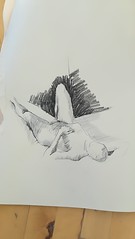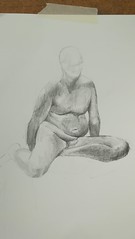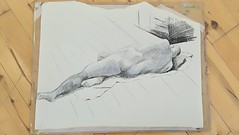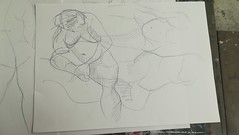The “matanza” in Galicia was the period of time (usually in winter after Christmas) when people would kill a pig and process and preserve it. The meat would have to last them the whole year, and every single scrap of the animal would be used (see previous post morcilla/black pudding). It would then be eked out to augment a family’s diet using a tiny amount of the animal everyday. Chicharrones were a way to use up all scraps and off-cuts of the animal that had not gone into making hams, sausages etc…The fat was an important source of calories to help fend off the cold of freezing winters. I still remember my (whippet thin) grandfather slicing off slivers of salted, cured fat that hung from hooks in his kitchen…and no he did not die from a heart attack…
The ingredients are incredibly simple and elemental; pork, fat and salt, and come from a time when kitchens in rural northern Spain had little in the way of…well anything really… Do not be tempted to add any spices or extra ingredients, it does not need it, this tastes really good just as it is.
CHICHARRONES
INGREDIENTS:
Any amount of off-cuts of uncooked pork (it is essential that you don’t remove any fat, this recipe wont work with lean meat)
salt
(Don’t worry about cooking large quantities of fat as most of it will be rendered off during the cooking process. Incidentally the fat that was rendered during the process would then be used a preservative for the chorizo sausages, which would be placed in jars and covered with the fat which would keep them fresh for a year or so without refrigeration).
METHOD
Roughly chop up the pork into chunks like you would for a stew along with any accompanying fat. Put it in a heavy based pan on a medium heat to start the fat melting, once it has started to melt, lower the heat and add salt to taste, the pork now has to cook on a low heat for 4 to 5 hours. Stir occasionally to stop anything from browning too much.
After 4 – 5 hours the meat should be very, very tender and all the fat liquid. Place the meat into a colander patting it down to squeeze out all the remaining fat. You can then pack it into a deep dish.
If you want to, you can put the dish into a medium oven for half an hour or so till it is toasted and then drain off any remaining fat in a colander again.
The chicharrones will keep in the fridge for a couple of weeks, or you can freeze them. You can eat them with bread or on toast, or even better, you can make “filloas con chicharrones” (a kind of savoury pancake typical of Galicia)
FILLOAS with CHICHARRONES (my gran used to make these on a skillet over an open fire in the kitchen)
Make a normal pancake/crepe mix, but instead of milk use stock, and season with a little salt.
Heat a little fat from the chicharrones or some light oil in a frying pan and pour in the pancake batter to cover the surface of the frying pan. Very quickly dot 4 or 5 chunks of chicharrones onto the batter and toast well on both sides…repeat until all the batter is used up.
other food posts:


























Pingback: nose to tail… « mvp – work in progress
Pingback: foodie questions… « mvp – work in progress
I’m jealous of my parents who managed to enjoy all the fruits of the labour of la matanza; such a same the tradition has died down in most places in Spain. My mum does still say that she can still hear the poor piggy squealing to death, though…
Shame*
Its true, its tough to be around when the animal is killed but that is the reality of eating meat. The matanza is such a responsible way of managing things…absolutely no waste and a guarantee of quality! Thanks a lot for the comment!